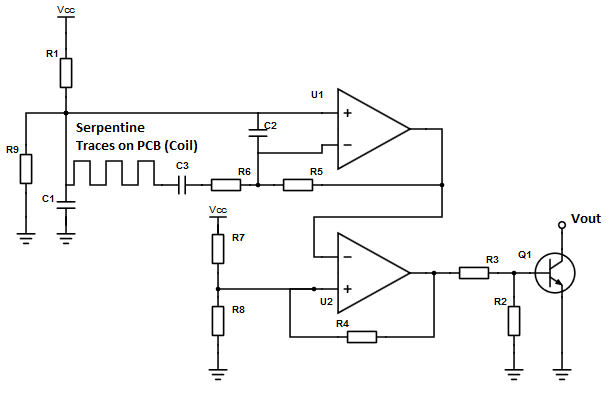


I have found this circuit mounted to a DC motor. It is probably an encoder but I don't know how it works. I have looked everywhere but I could not find a similar encoder assuming that this is in fact one. The circuit is placed on a motor casing in a way that does not allow it to rotate or move. The PCB part with green solder mask is facing away from the motor. A metallic disk with a magnetic ring on top of it is attached to the motor shaft facing the green mask and is allowed to rotate freely with the shaft. The electronic components on the PCB are caps, resistors, dual operational amplifier (IC BA728) and a regular NPN transistor (C3311). Can someone identify the type of this encoder? or better yet explain how it operates?
(I Modified the schematic again. Thanks, curd.)
